On the banks of the Rio Grande, a hand-pulled ferry
While in McAllen last weekend, which sits at the southern tip of Texas, and where I gave a presentation at Planta Nativa festival, my husband and I had time to do a little sightseeing. On Sunday afternoon we drove to Los Ebanos ferry crossing to see something unusually old-timey: the only hand-pulled ferry at a U.S. border crossing.
The ferry, which can carry up to three cars and a handful of pedestrians across the Rio Grande, isn’t powered by diesel engine but by manpower — specifically by 4 or 5 men pulling on a rope that stretches across the green river. We watched it float across the river a couple of times, fascinated that such a low-tech crossing still officially operates in our post-9/11 world.
I read that the rope is anchored to a big Texas Ebony tree, which gives the tiny community of Los Ebanos its name.
It all harks back to a simpler time. We paid the $1.25 per person fee but didn’t ride the ferry. We didn’t have our passports, and Border Patrol warned us not to cross without them.
We merely stood on a bluff above the river and watched the slow procession as the men pulled along the rope, hand over hand, to move the ferry across. On the Mexican side, a road leads up a rise and around a bend.
On the American side, a U.S. Customs and Border Station bristles with fencing and signage. We walked back through, confirmed that we’d not left U.S. soil, and headed to our car parked along a dirt road.
Handmade signs along the dirt track hinted at a former lively tourist trade for tiny Los Ebanos.
Today, though, it’s a ghost town, all the ice-cream and trinket shops shuttered and flaking paint. Which somehow makes the place seem even more poignant, a reminder of a simpler, less politicized era.
If you want to see it yourself, it’s located 24 miles west of McAllen, 2 miles south of Hwy 83 on FM 886 (El Faro Road). Go through the tiny village and follow signs to the ferry.
I welcome your comments; please scroll to the end of this post to leave one. If you’re reading this in a subscription email, click here to visit Digging and find the comment box at the end of each post.
_______________________
Digging Deeper: News and Upcoming Events
I’ll be speaking at the Antique Rose Emporium Fall Festival 2016 in Brenham, Texas, on Saturday, November 5th, 1:30-2:30 pm. Come on out to the Antique Rose Emporium’s beautiful gardens for a day of speakers and fun! My talk, with plenty of eye-candy photos, is called “Hold the Hose! How to Design a Water-Saving Garden that Wows.” Meet me afterward at the book-signing table!

All material © 2006-2016 by Pam Penick for Digging. Unauthorized reproduction prohibited.


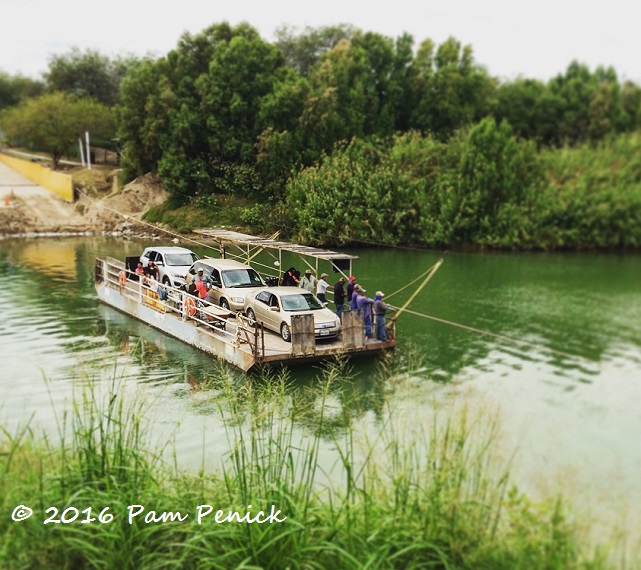
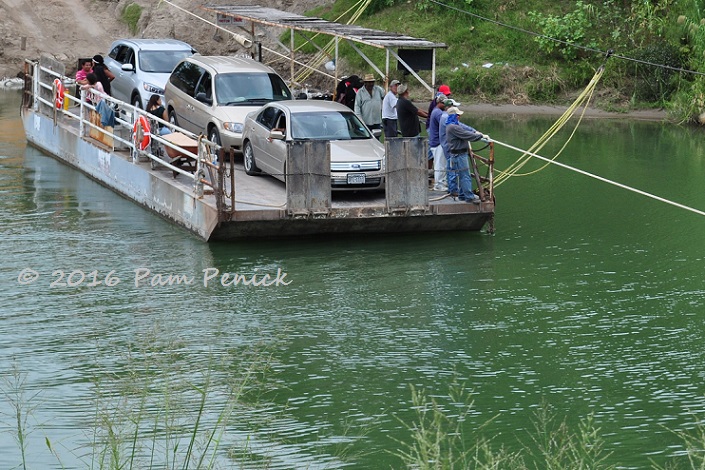
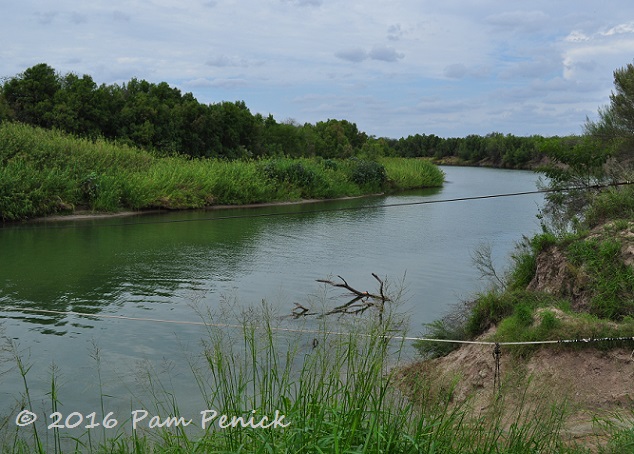
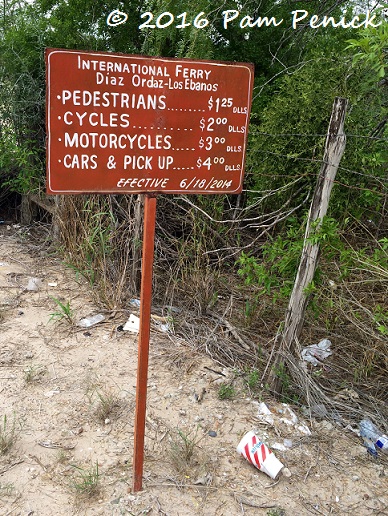
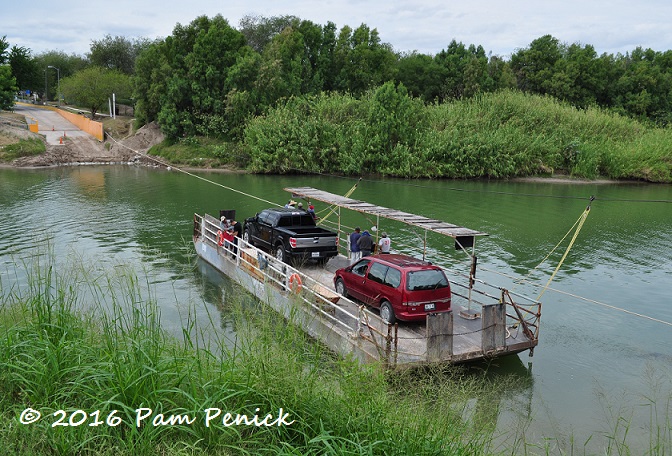
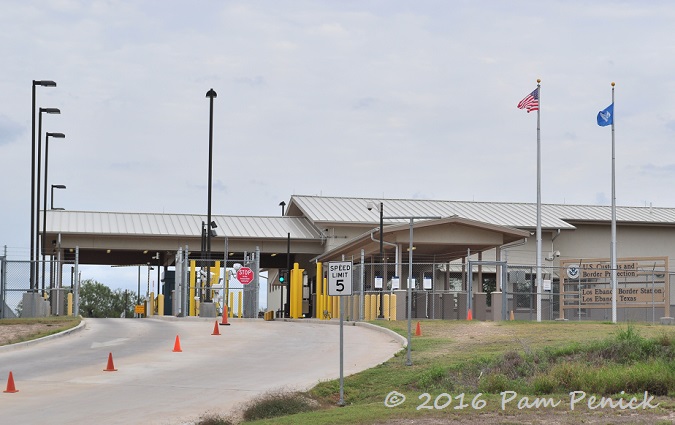
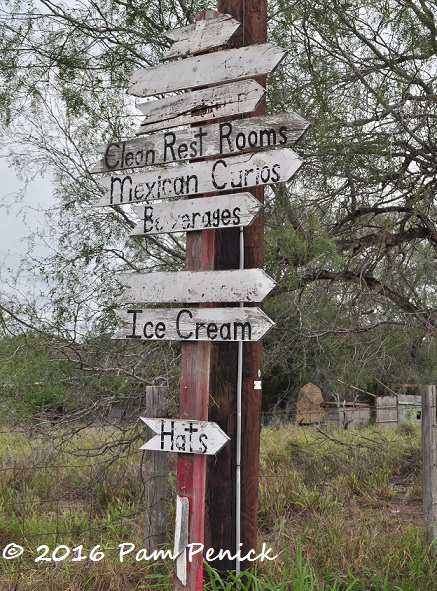
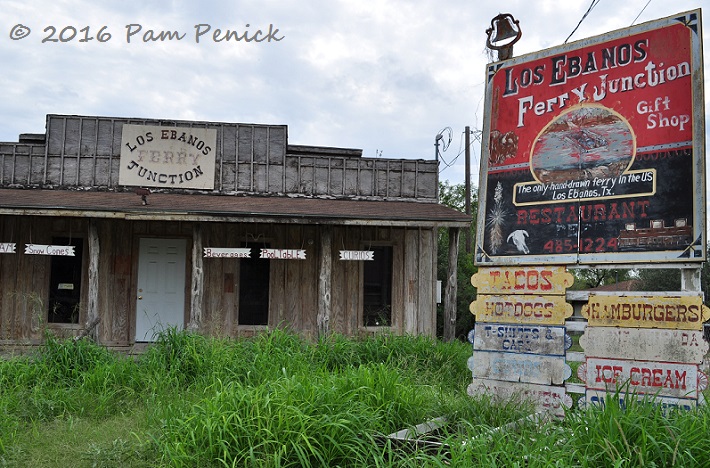
We used to have a ‘pont’ at Malgas.
That was powered by one man.
What exactly is a pont, Diana? I’m not familiar with that term. Is that a poled barge? —Pam
Afrikaans word for what you have in your post.
A ferry that is pulled across the river by a man using the cable strung across.
http://www.southafrica.net/blog/en/posts/entry/the-pont-at-malgas
Thanks for the link, Diana. One guy, eh? I bet he got a workout every day. —Pam
There are several roads in SW Portland with Ferry in the name (eg. Taylors Ferry, Scholls Ferry, etc) I finally asked someone “why”…I guess before Portland was the city of bridges there were multiple crossings of the Willamette River via ferry. I wonder if any were via manpower and rope? Must have been…
Street names reveal the history of a place, as I just heard while watching Hamilton’s America. Interesting to think about that in terms of earlier transportation. —Pam
This brought back a memory of crossing a river on a ferry when I was a child. I don’t remember where it was. An interesting sight.
I thought it was too. —Pam